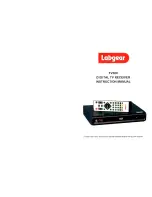
FX 146
•
44
controlled, compared with another frequency, as is done in a PLL circuit.
See PHASE DETECTOR, PLL.
RSSI
= "Received Signal Strength Indicator," a function of the MC13135 IC
and comparable circuits which permits MEASURING of the relative strength
of a received signal. A few microamps of variation can be interpreted as DB
(decibels) of signal strength.
RX
= Abbreviation for receive, receiver, receiving. [See: TX]
SPEAKER-MIKE
= speaker and microphone functions contained in the
same physical housing, as in the design of simple home intercoms. For ham
operators, this means that both speaker and microphone are in a
microphone casing with separate plugs from a common cord. Since such
accessories can use ANY style of plug for either mic or speaker function,
Ramsey Electronics has adopted the popular ICOM-compatible standard for
the FX transceivers.
SHIELD
= The outer braid of audio or RF coaxial cable, or the aluminum
case enclosing a coil or transformer.The metal case of a transceiver also
performs an important RF shielding function.The shield blocks or protects a
coil from the effect of nearby objects that would change its inductance. The
shielding on cable prevents the inner wire from radiating (RF) or from picking
up stray radiation such as AC hum.
SQUELCH
= means literally, to subdue utterly or crushingly! In radio
communication, usually VHF and UHF, squelch is the circuitry needed to
subdue (mute) the background noise until a detected signal "breaks" the
squelch.
SUPERHET
= A receiver design that converts the incoming desired
frequency to a lower Intermediate Frequency (IF) where most of the gain
and bandpass characteristics reside.
TOROID
= A style of making coils or inductors where the insulated wire is
threaded ("wound") around a metallic form shaped like a doughnut. This
style of coil making generally eliminates any need for additional shielding
which may be needed to make the coil's inductance immune to the presence
of other nearby components or objects with metallic content.
TRIMMER
= either a capacitor or resistor, miniature and variable, intended
to permit exact, final adjustment of circuit values.
TX
= Abbreviation for transmit, transmitter, transmitting.
T-R
= Abbreviation for "Transmit-Receive Switching", which can be
accomplished by manual switches, relays or solid-state devices such as the
PIN diodes used in the FX transceivers.
UNLOCK, unlocked
= refers to the condition in a PLL (phased locked loop)
where one or more elements of the loop become defective or incorrect,
preventing the phase detector from supplying the correct control voltage to
the oscillator for the intended frequency of operation.
VARACTOR
= a diode whose capacitance can be varied in step by the
FX-146
•
103
soon as both strings are exactly on the same frequency. By tuning the one
string to the exact pitch of the other, you have corrected the phasing of the
two independent frequency sources. Pilots of multi-engine planes (or boats)
make slight RPM adjustments to get all engines in phase. If you have two
audio oscillators handy, listen carefully as you adjust both to EXACTLY the
same frequency. Another analogy is the process of tuning a BFO equipped
receiver to a perfect null or "zero beat." If you are exactly on frequency, you
hear nothing, even though the BFO and incoming signal are both fully
present. In a PLL, we want the "beat note" to be a perfect zero or constant
direct current (DC), and this DC controls the VCO.
What breaks the circle? What UN-locks the loop, the PLL? Let's think and
make a list of possibilities:
?
VCO will not tune in proper frequency range
?
Bad Reference Oscillator (IC, crystal, component?)
?
Invalid "N" number?
?
A physical break in the loop?
Caused by (what else?):
?
Bad solder connections
?
Incorrect components
?
Defective components (rare)
?
Incorrect programming
The preceding is about as untechnical as we know how to get in giving a hint
of how the PLL Frequency Synthesizer portion of your transceiver functions.
The Glossary of Terms in this book might give some additional help, but
there's really no substitute for just exploring the knowhow of modern
communications technology by whatever learning method works best for
you.
Now, let's take another look at the whole circuit in a more formal way.
The PLL Frequency Synthesizer IC:
?
The MC145152 IC incorporates the equivalent of 8000 individual
transistors and contains the following circuits:
?
A crystal reference oscillator governed by Y2, 10.24 MHz.
?
A counter or "frequency divider" circuit set externally to divide the
crystal oscillator output by 2048, for a Reference Frequency output
of 5 KHz.
?
A second counter or frequency divider that divides the frequency
from the Prescaler (U3) by the externally programmed number that
we call "N".
?
A third frequency divider ("A") also used for programming
?
Control logic circuitry which permit the "N" and "A" counters to















































